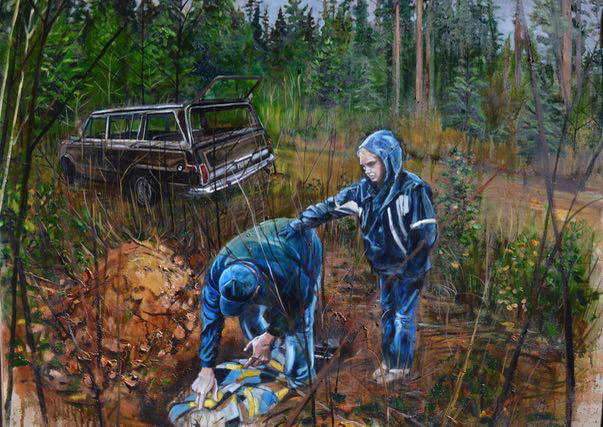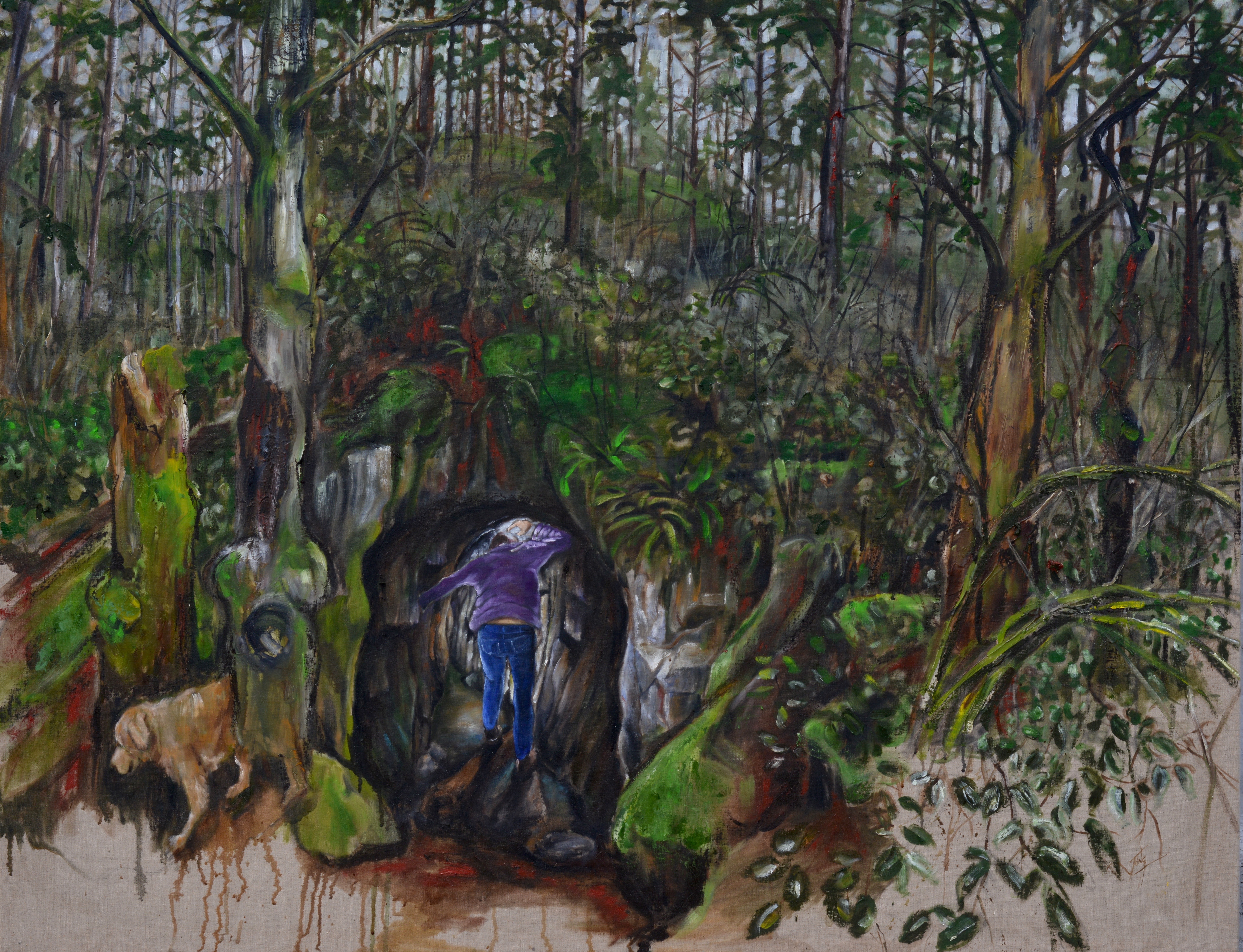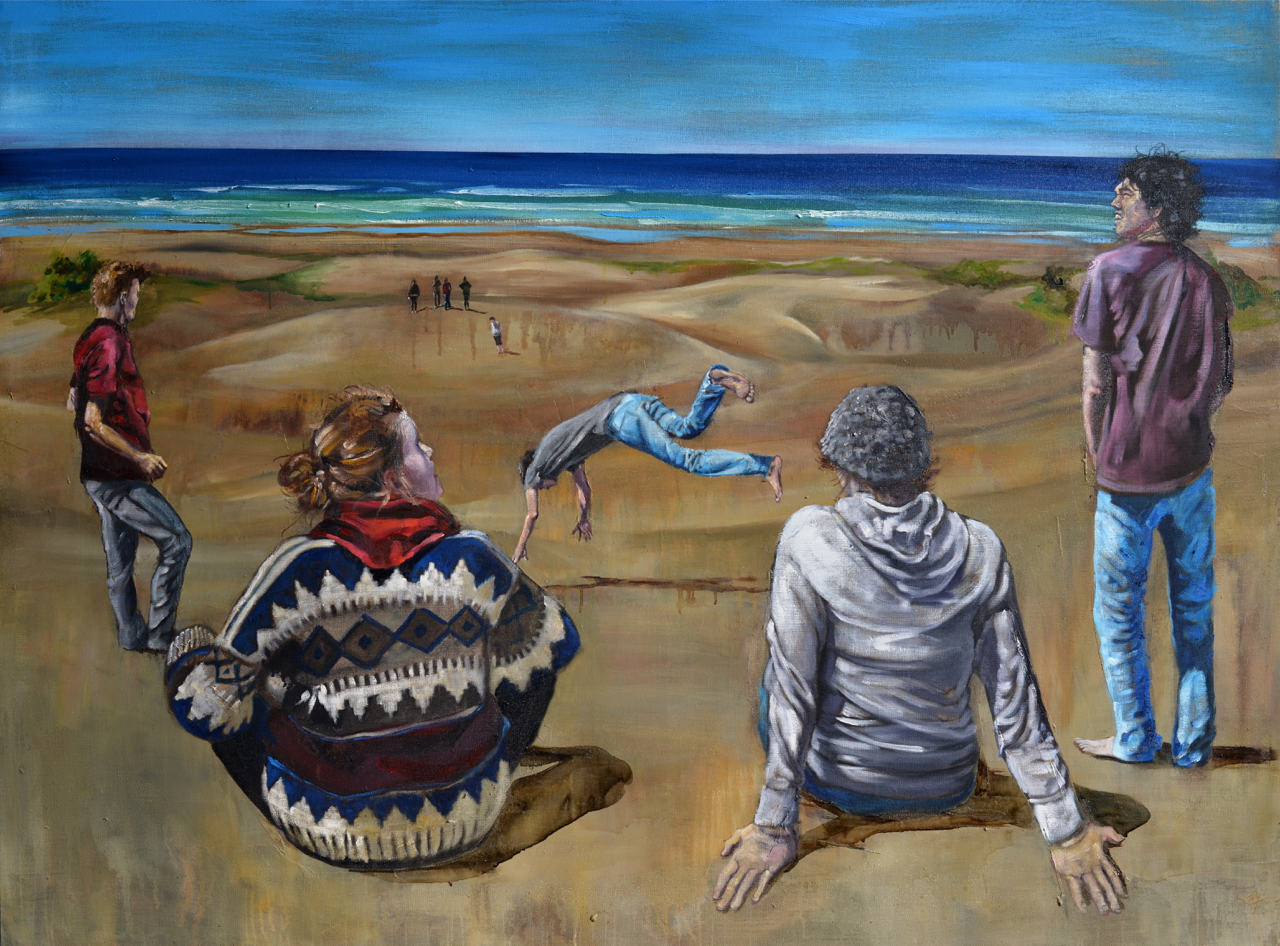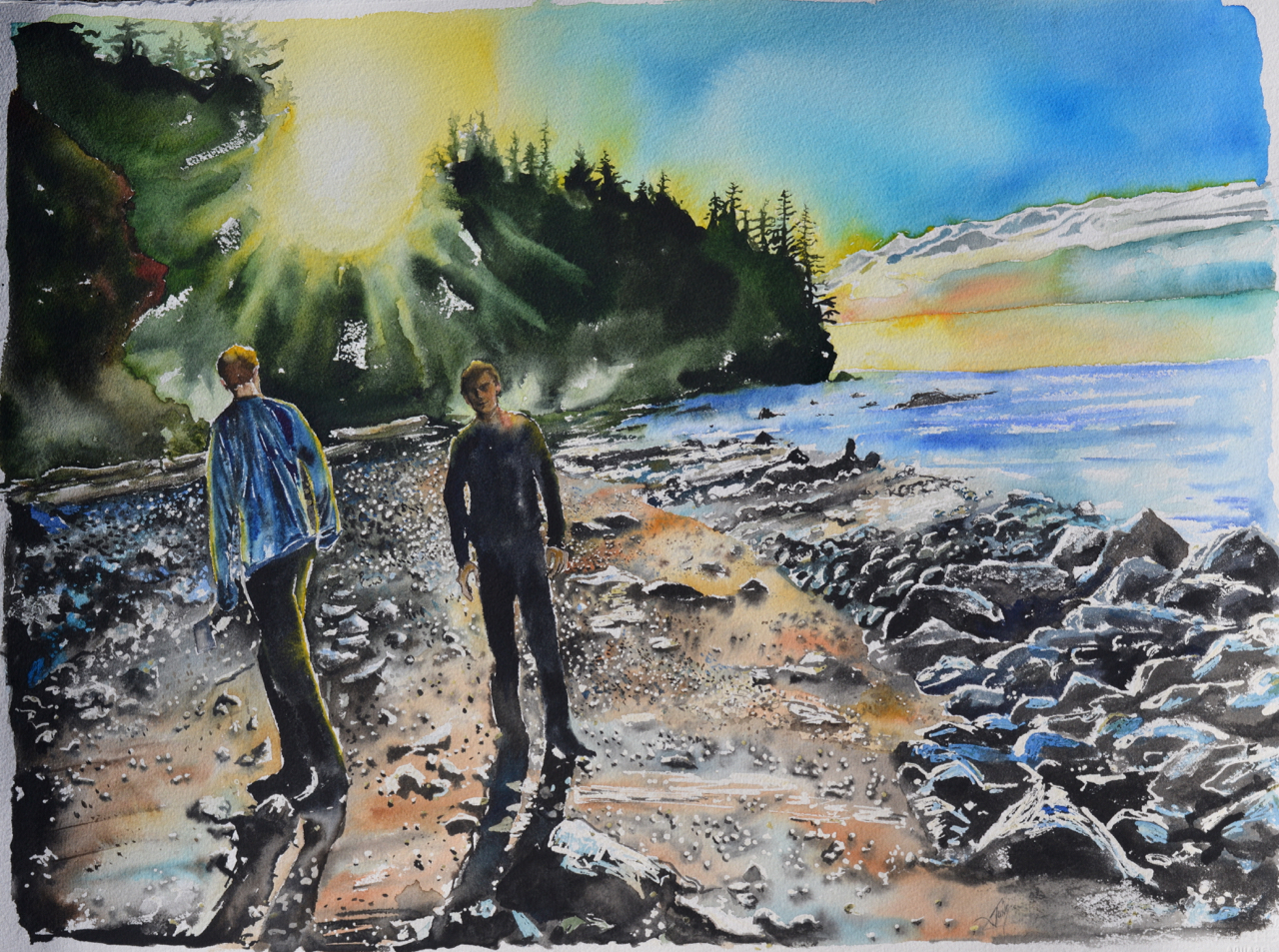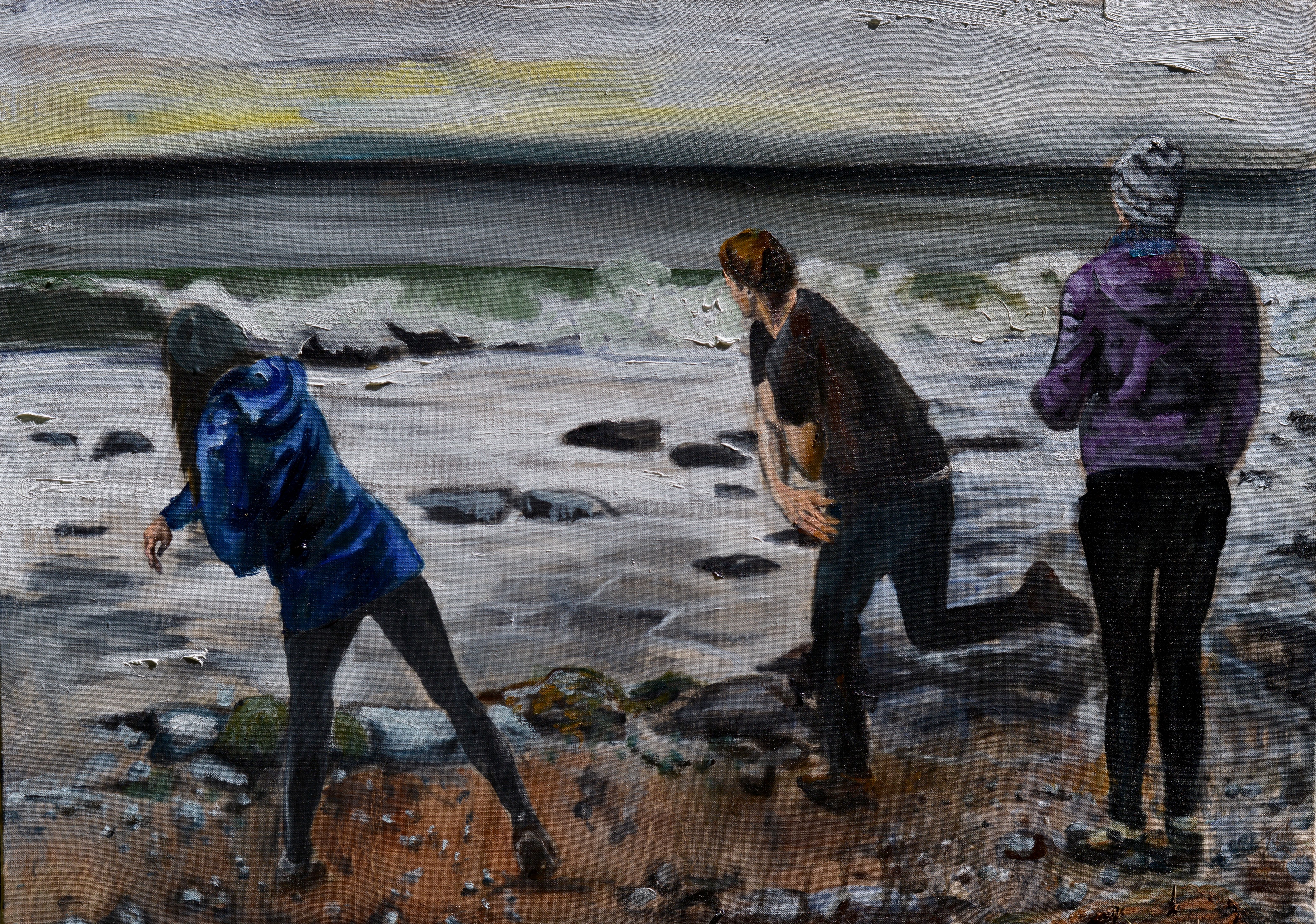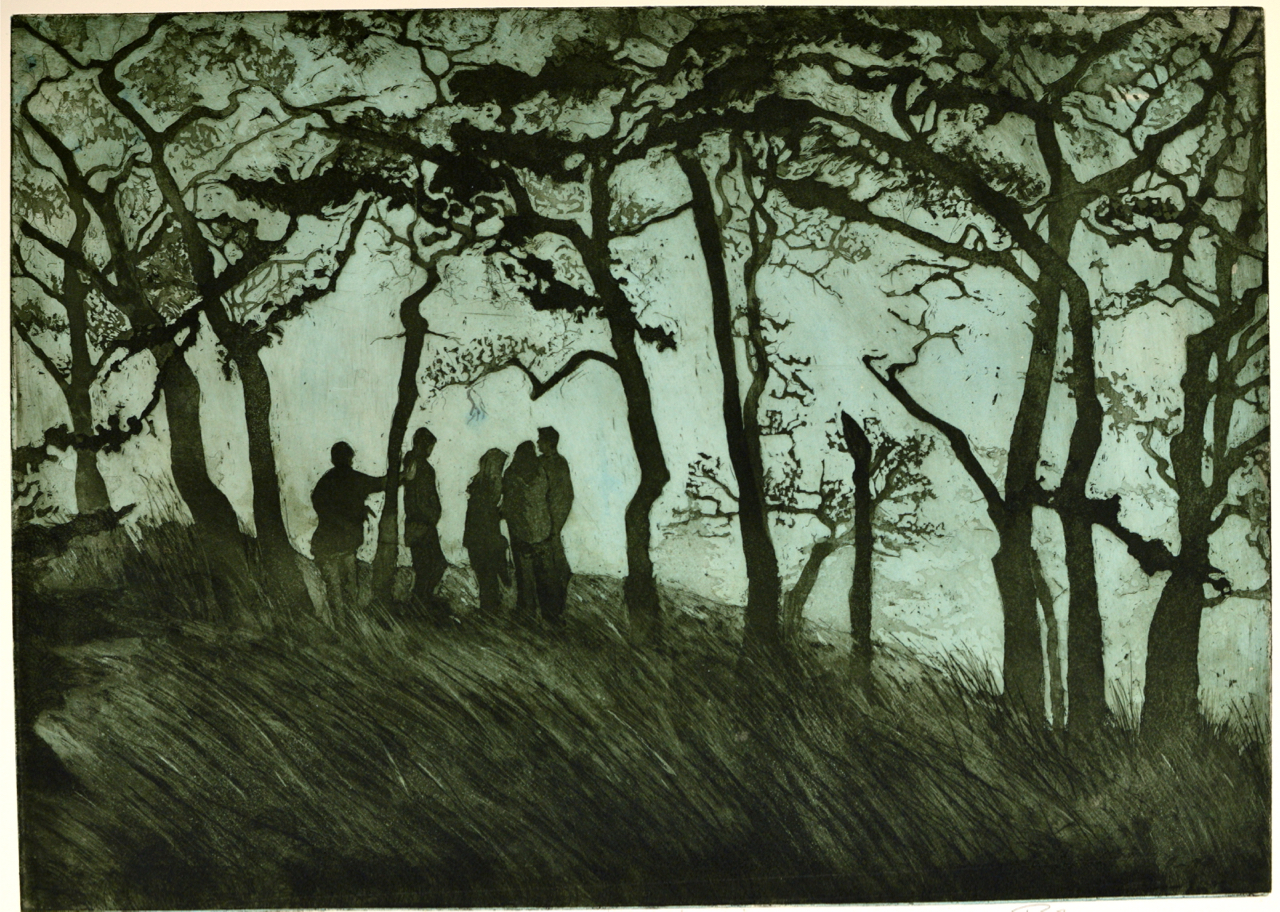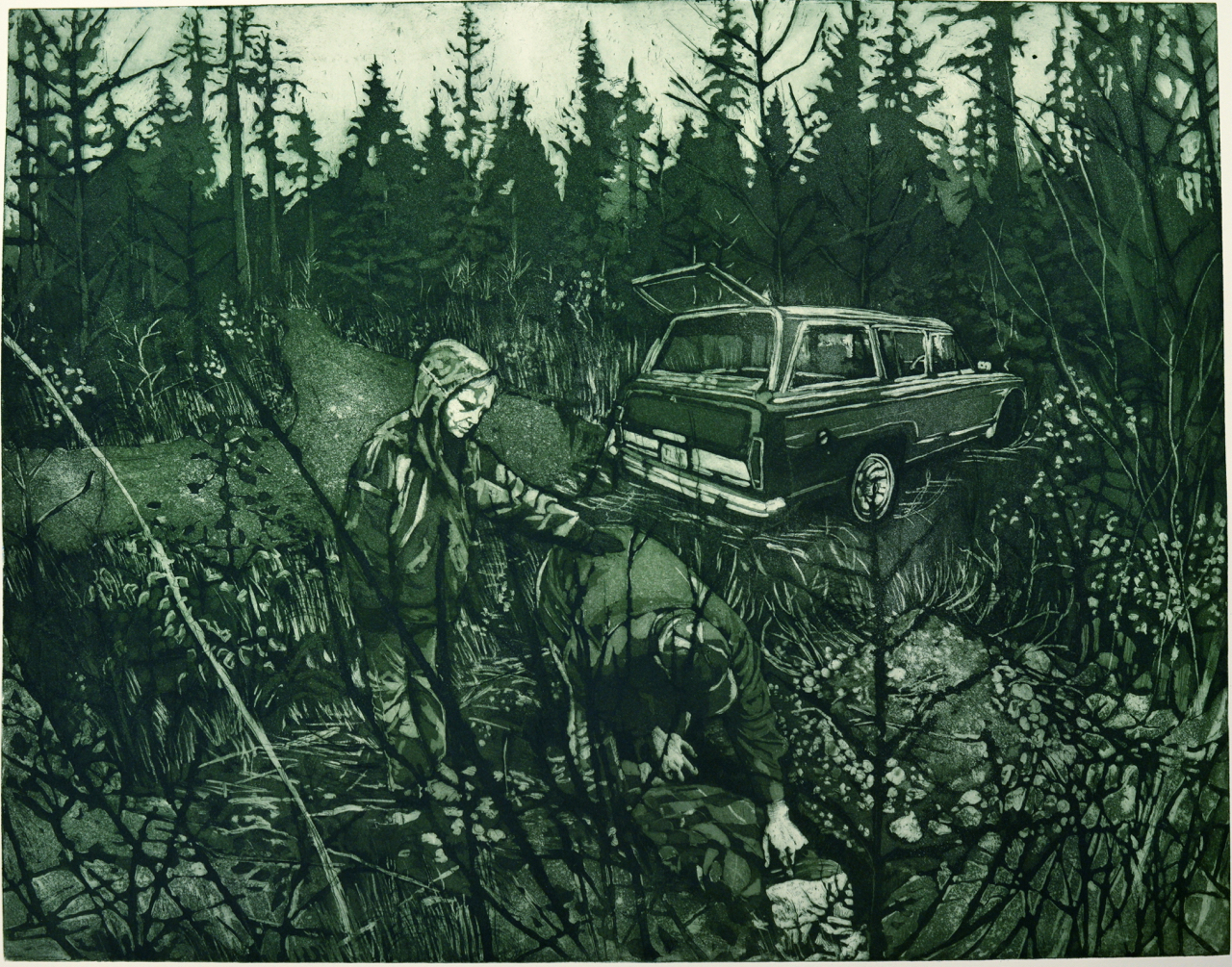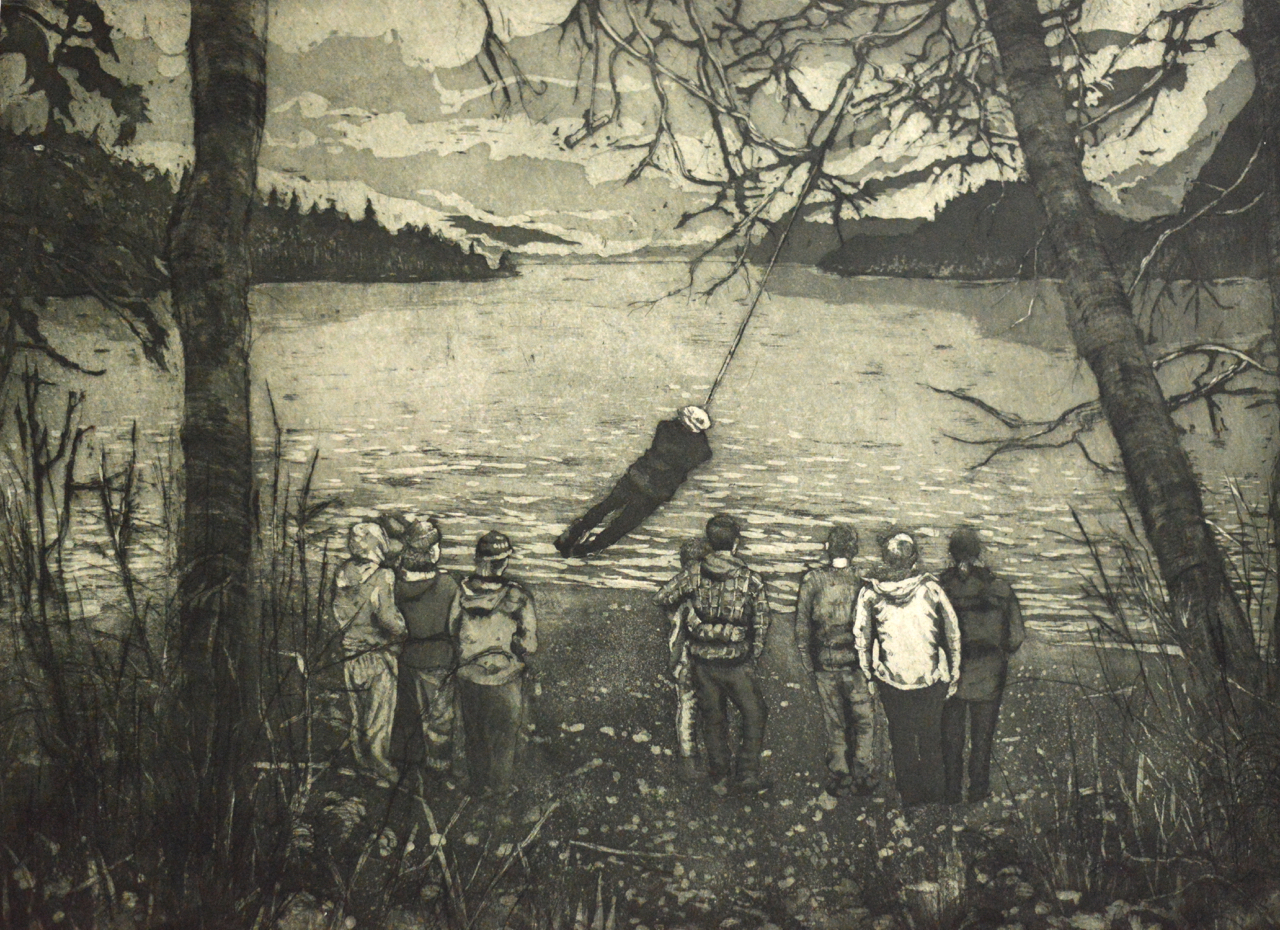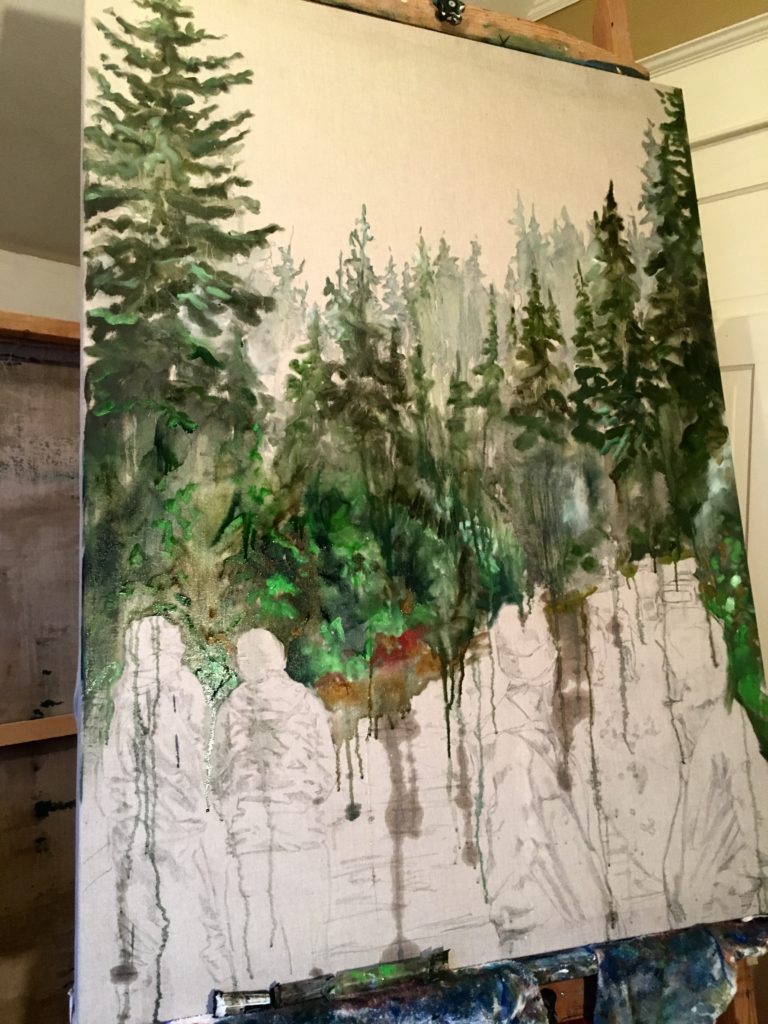On the coast we live outside of History. War, famine, class struggle pass over here not disturbing the utopian bliss we have constructed. Since the environmental protests of the 90’s large historical movements have been absent from our consciousness, and we have filled the void with the drama of our own existence. Especially the young are seemingly insulated from the burdens of the past. The images inside this body of work use landscape as a frame for the space between the social and personal; landscape as the beautiful, rugged, wet, backdrop for the theatre of our own experience.
In part the work is derived from being at a distance both generational and national. Growing up in South Africa I was acutely aware of the world around me because politics effected our lives. As a teacher I worked with young people whose national lack of political awareness is compounded by time’s erasure of the past. The work utilizes imagery that explores the absence of memory and is interested in exploring the texture of existence here on the West Coast. The imagery juxtaposes history with the personal, opening a conversation of individual struggle in an absence of want.
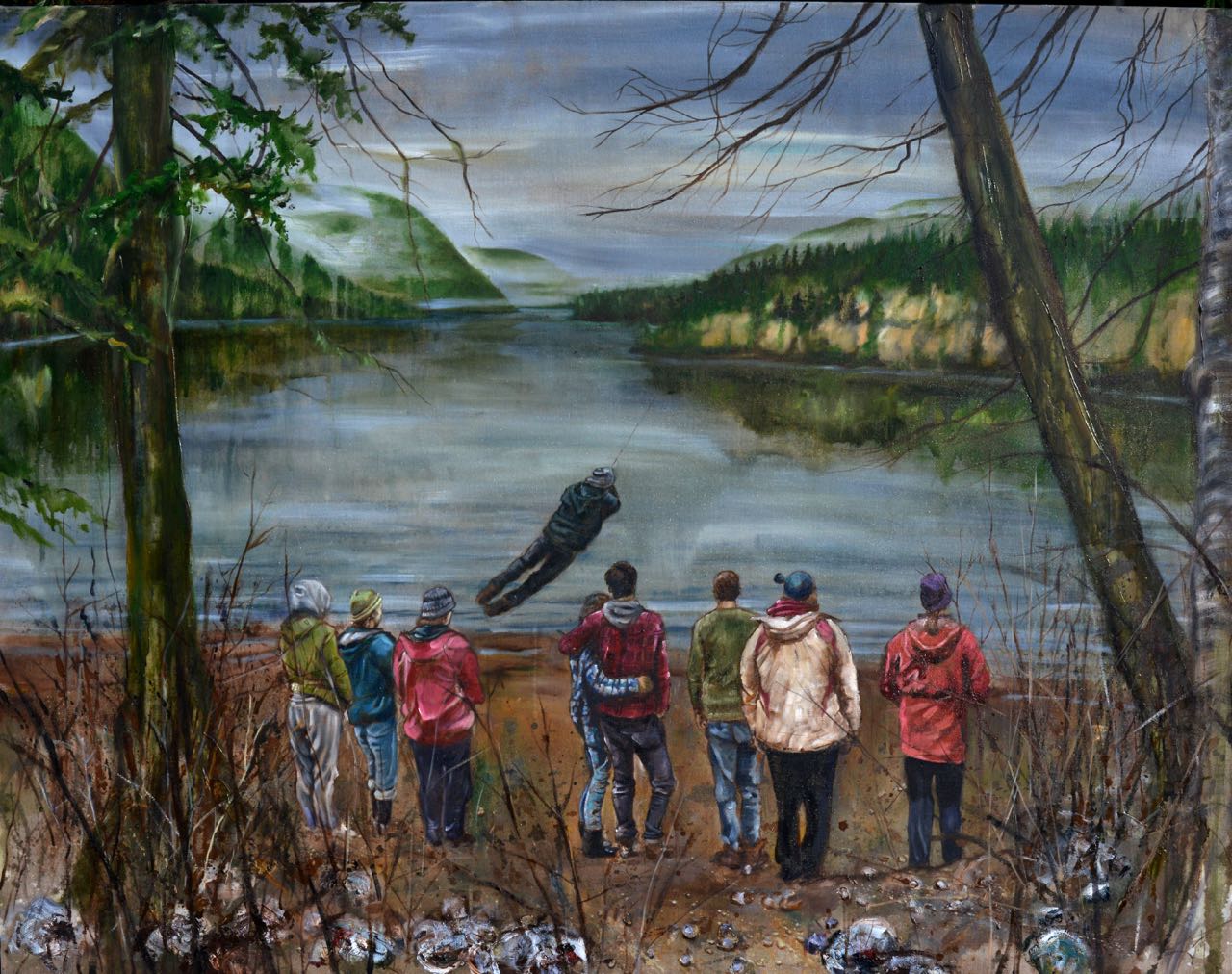
“Rope” 48 x 60″ oil on linen
Rope Swing is a particularly important image inside the body of work because it illustrates the idea of “being outside history”. The boy swings above a group of on-lookers, the swing is harmless, yet the image is disquieting as the rope is a signifier for something darker. A tension is built between the innocence of the early morning play juxtaposed with scenes that are part of our cultural experience of on-lookers in the antebellum south. They are not witnessing a murder, no self harm is being witnessed, yet the figure at the end of a rope casts a shadow over the group generating a space I want the work to hover in.
“Burial” 48 x 60″ oil on linen
The work produced inside this theme is presented as both prints and painting. A methodology exists in the work where ideas are developed in between the mediums at times existing in one at times echoed in both. The voice of the imagery changes between printmaking and painting. The texture, scale, and color of paintings are juxtaposed against the intensity of the prints mono-chromaticness that essentializes the imagery.
The pictures exist in a realm of memory and on one level they function as nostalgia and on another they strike an underlying sense of disquiet. At a time when discussions of privilege are so prevalent the images jostle with this notion juxtaposing a sense of empathy with a sense of our ahistorical existence
The best work in the series combine the lightness of a moment with a discordant note of apprehension, Young people fashion a swing, a car is parked in the woods, a couple takes shelter amongst logs on a beach, people look over a precipice in the fog, the absurdity of large flotation toys are carried towards the darkening trees.
“Cave” 48 x 60″ oil on linen
“Long Beach” 48 x 60″ oil on linen
“Morning Light” 22 x 30 ” watercolour
“Fire” 22 x 30″ watercolour
“skipping rocks” 16 x 22″ oil on linen
“Galiano Island” 18 x 24 etching
“Shelter” 18 x 24″ etching
“Crossing Over” (1st state) etching 18 x 24″
“Burial” 18 x 24″ etching
“The Rope” 18 x 24″ etching
“In the Snow (Cowichan)” 12 x 18″ etching
In progress (at Avatar Grove)
“Man in his movement …” 18 x 36″ etching
This etching was completed many years before and is an echo of an earlier time for both me and the history of the island. It was conceived of while driving through a vast clear-cut near Cape Scott, on the northern most tip of the island, and then the imagery was further developed while camping in the “black hole” protesting at Clayoquot Sound.
The title emerged as I was moving through the eviscerated landscapes and reading Jose Luis Borges and stumbled on this sentence “man in his movement modifies the forms around him…”
And at the time of writing of this the notion of the “end of history” is being challenged (as it must) at Fairy Creek where protesters stand in front of logging trucks protecting one of the last remaining watersheds of old growth forests from being destroyed.
